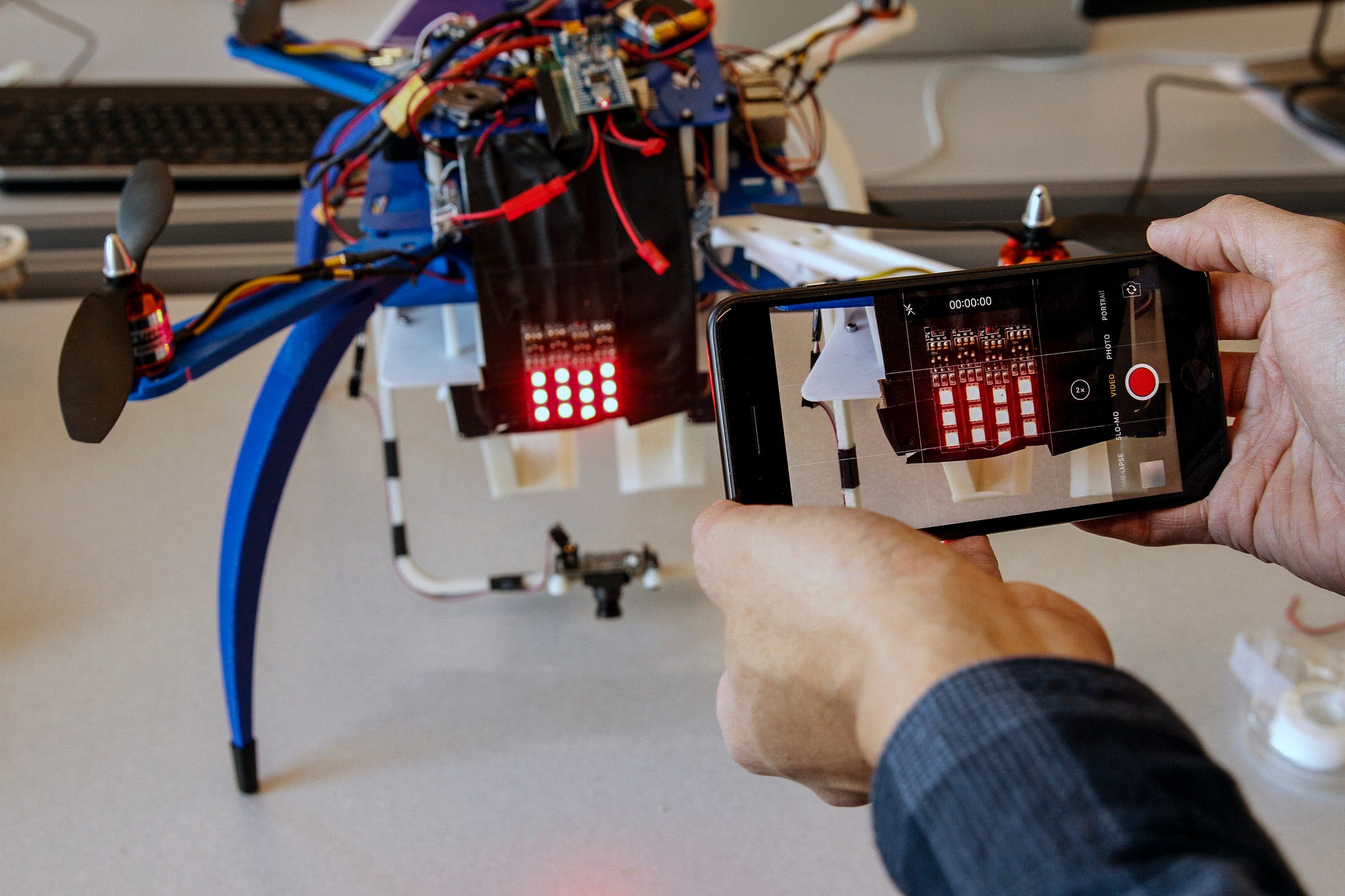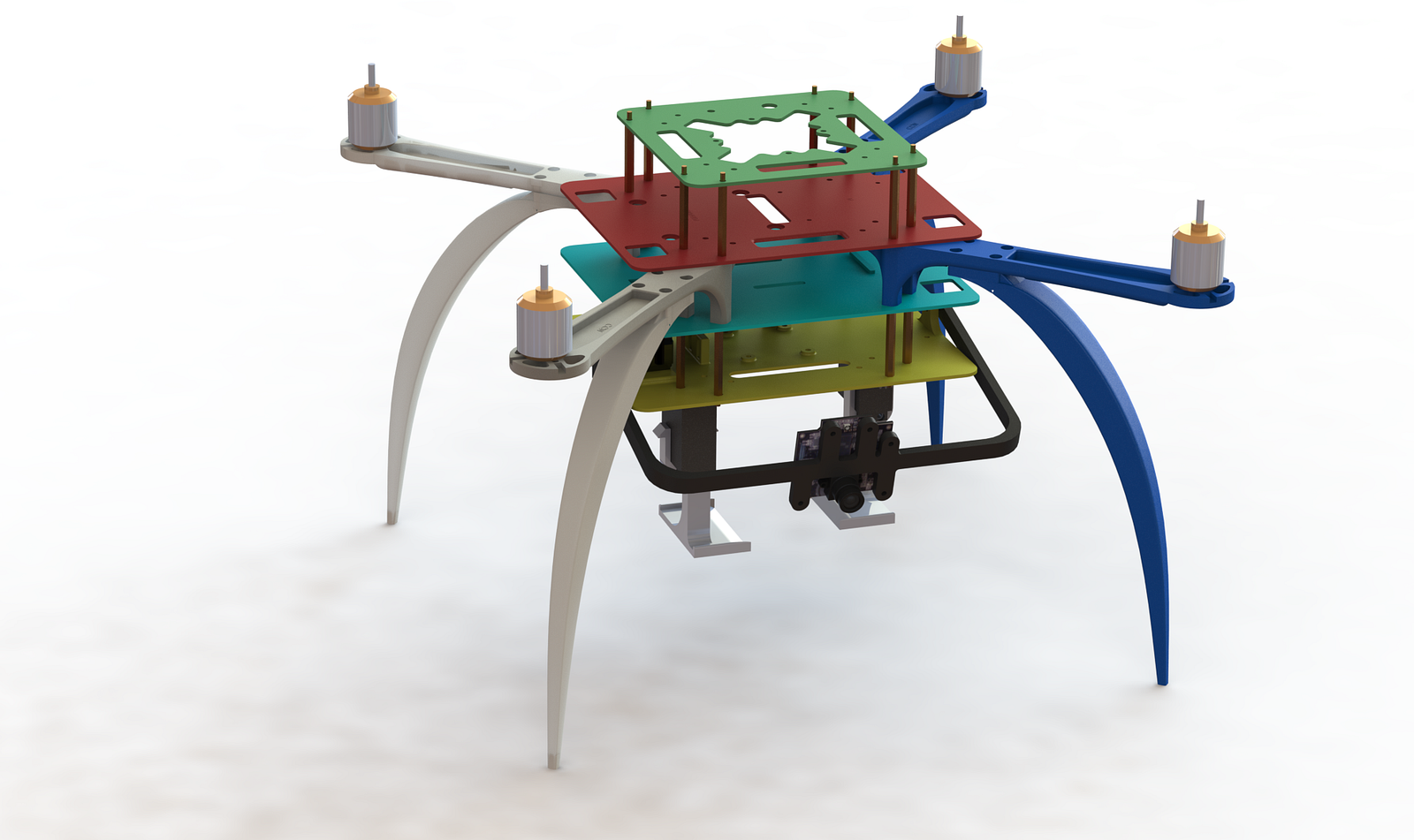Why a Car Company Is Looking to the Skies: A Glimpse into Ford’s Drone Research
John Luo, Research Manager, Emerging Technology Integration, Ford Research and Advanced Engineering; and Adi Singh, Principal Scientist, Small Unmanned Aerial Systems Integration, Ford Research and Advanced Engineering

If you’ve looked at your social media feeds lately, chances are you’ve seen some video or photography taken with the help of a drone. These types of shots, which have been out of reach for us amateurs until now, are just the tip of the iceberg when it comes to what drone technology can help us do.
At Ford, we recognize that people are using drones in fascinating ways: to monitor crops in agriculture, gather information for disaster management, and in the inspection of buildings or other infrastructure. Our customers are beginning to think about drones as tools to help get their jobs done, the same way they think about their vehicles. As researchers, we were intrigued by the relationship between our vehicles and drones and how we might serve our customers in the future, so we embarked on a mission to find out more.
The first thing to know about drones? There are a lot of them and the number is growing every day. The number of small, hobbyist unmanned aerial vehicles is expected to grow from 1.9 million drones to as many as 4.3 million total by 2020, according to the Federal Aviation Administration (FAA). That doesn’t even include sales of drones used for commercial purposes, which are expected to triple in that same time period and bring the total number of drones in the U.S. to 7 million units.
Though the technology is becoming more popular, it’s still in its relative infancy. One big hurdle that keeps drones from becoming truly efficient work tools is the framework that determines what rules they will play by in the air — that’s why we’re taking part in the FAA Unmanned Aircraft Systems Symposium this week. We are the only automaker on the FAA’s Aviation Rulemaking Committee, and we are there because we want to make sure that Ford’s expertise in transportation is leveraged to help develop a framework for this new mode of transportation, whether for goods, services, and even people. By being a proactive participant in this important conversation, we believe we can maximize the potential of drone applications in the future.
For example, we recently recommended ways to identify and track drones during flight as part of an FAA committee seeking suggestions on this issue. Our unique proposal would easily identify drones in close range with little to no modification of existing models. This work will go on to ensure the safe and responsible use of drones in U.S. airspace while maintaining the bandwidth necessary for innovation, as the recommendations given to the FAA could help lay the foundation for drone flights over people and beyond visual line of sight.
Specifically, our solution leverages the 10-digit code the FAA provides to those who register their drone, which must be legibly printed somewhere on the frame of the device. The challenge is that a drone’s ID cannot be read unless somebody is in close proximity to the device, making it almost impossible to identify drones that are in flight.
Therefore, we looked at using the anti-collision lights that several drones offer to improve their visibility during nighttime operations. Our patent-pending idea is to use the lights to broadcast a drone’s 10-digit code in an ASCII-encoded binary signal at a baud rate — one that could be synced for consistency across the system to ensure universal compatibility.
In addition to these lights being used to visually communicate system status with a combination of color and blinks, they could send a drone’s FAA registration number so that it can be captured and interpreted by a camera-based software app we’ve developed. Our decoding algorithms, built using Google TensorFlow, can be run on a standard smartphone, which would enable the public to identify and report any misbehaving drones. Already, our preliminary in-field tests show the system can consistently and accurately identify drones operating within 80 feet of an observer. Think of the 10-digit code as a license plate number, with our solution allowing people to identify or report a drone that’s operating in a situation where it shouldn’t be.
By using an existing on-board subsystem, we can help operators avoid spending time and money to install additional hardware components on their drone, such as dedicated radio or ADS-B transmitters, making this solution optimal for widespread adoption.
A more detailed look at our submission to the FAA can be found in our whitepaper titled, “A Zero-Cost Solution for Remote Identification and Tracking of sUAS in Low Altitude Flights.”
Researching the potential of drones for the future
Beyond our work with the FAA, we’re also engaged in research with drones to better understand where their use by our customers intersects with the use of our vehicles. Our UAV Systems group in Palo Alto created a customizable development platform that gives various teams at Ford the ability to quickly test opportunities where drones and vehicles could work together, such as during a survey operation.
 Ford’s customizable drone development platform allows teams to easily test how vehicles can work with this technology.
Ford’s customizable drone development platform allows teams to easily test how vehicles can work with this technology.
The platform offers modular, modifiable baseline capabilities required in a UAV — a flight controller, onboard computer, a parametrized form factor, and so on — that allow anyone to test concepts without the need to become experts on the nitty-gritty of drone development. At once, our platform allows iterative testing and development of hardware, software, electrical, material, structural and user interface design concepts.
A platform like this gives engineering teams across Ford a stable operational tool so they can focus on the unique capability they want to test instead of the practical challenge of building a UAV system from scratch. Engineers can tweak and test form factors, weight distribution or other sub-systems without having to start over with a new drone. In this way, we are providing an environment for our teams to assess the long-term possibilities of the technology and the role they it play in the future. And in the future, we’re planning to make this an open-source platform to allow others to take advantage of it.
It might seem strange to think that a car company is helping to lay the groundwork for drones, but we believe there is so much potential to explore here. To integrate new technology into vehicles, we need to develop a good understanding of how it works, how it can be used and what its limitations are. We frequently conduct experiments on individual vehicle components to understand as much as we can about them, so we bring only the best into our vehicles. Now we’re doing that with drones.
As drone adoption accelerates, we think many of our customers will want to use these devices as part of their lifestyle, whether to pursue hobbies or even as a tool for their business — no different than how they use an F-150 or Transit on a job site. By conducting in-house research in this emerging area while simultaneously participating in the regulatory conversation at the federal level, Ford is laying the groundwork to make sure our vehicles can deliver the right experiences to our customers as we transition to a smart world.
